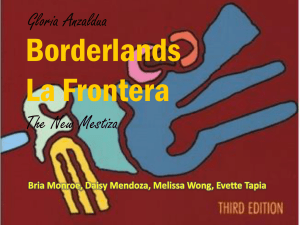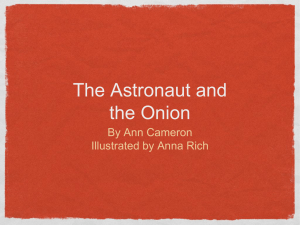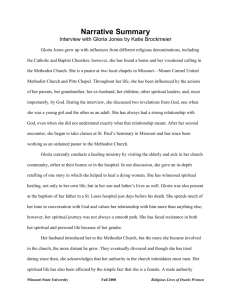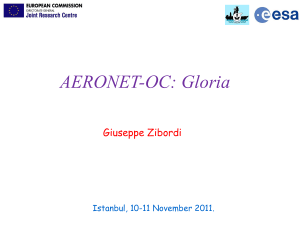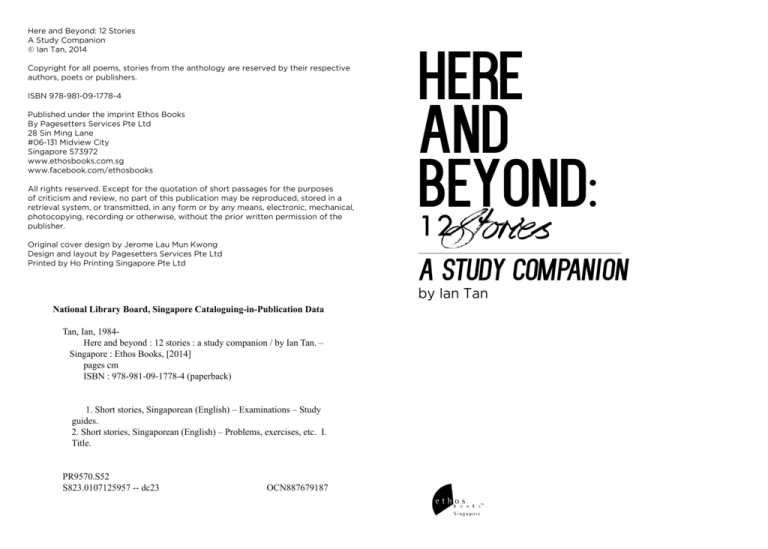
Here and Beyond: 12 Stories
A Study Companion
© Ian Tan, 2014
Copyright for all poems, stories from the anthology are reserved by their respective
authors, poets or publishers.
ISBN 978-981-09-1778-4
Published under the imprint Ethos Books
By Pagesetters Services Pte Ltd
28 Sin Ming Lane
#06-131 Midview City
Singapore 573972
www.ethosbooks.com.sg
www.facebook.com/ethosbooks
All rights reserved. Except for the quotation of short passages for the purposes
of criticism and review, no part of this publication may be reproduced, stored in a
retrieval system, or transmitted, in any form or by any means, electronic, mechanical,
photocopying, recording or otherwise, without the prior written permission of the
publisher.
Original cover design by Jerome Lau Mun Kwong
Design and layout by Pagesetters Services Pte Ltd
Printed by Ho Printing Singapore Pte Ltd
Here
And
Beyond:
12Stories
A Study Companion
by Ian Tan
National Library Board, Singapore Cataloguing-in-Publication Data
Tan, Ian, 1984Here and beyond : 12 stories : a study companion / by Ian Tan. –
Singapore : Ethos Books, [2014]
pages cm
ISBN : 978-981-09-1778-4 (paperback)
1. Short stories, Singaporean (English) – Examinations – Study
guides.
2. Short stories, Singaporean (English) – Problems, exercises, etc. I.
Title.
PR9570.S52
S823.0107125957 -- dc23
OCN887679187
Contents
Introduction:
Reading the short story
4
6
Campfire
by Philip Jeyaretnam
66
The Tiger
by S. Rajaratnam
12
True Singapore Ghost Story
by Felix Cheong
70
Here Comes the Sun
by Yeo Wei Wei
18
About the Author
75
The Shoes of My Sensei
by Goh Sin Tub
24
My Cousin Tim
by Simon Tay
28
City in C Minor
by Stephanie Ye
36
Visitors
by Alfian Sa'at
40
Gloria
by Suchen Christine Lim
44
The Shooting Ranch
by Wena Poon
50
Grasshoppers
by O Thiam Chin
58
The Judge
by Claire Tham
62
HERE AND BEYOND: 12 STORIES • A STUDY COMPANION
IAN TAN
5
Introduction:
reading the short story
C
onsider the following “short story”, often described to be the world’s shortest story:
For sale: baby shoes, never worn.
Although six words long, the text invites us to consider certain questions: Why are the
baby shoes never worn? Why are they for sale now? Who is putting them up for sale?
Why have they done so? Keeping these questions in mind, the imaginative reader will
construct an entire narrative surrounding this text, and create characters that fit into the
narrative, complete with human thoughts, feelings and motivations.
The short story is literally a short story – it is a narrative that uses fewer words than a
novel. It uses less time to set up a narrative and introduce characters to us, and brings
us to the climax and conclusion of the story more rapidly. Because it uses fewer words
to convey the story, its themes and messages, the short story invites us to use our
imaginations to fill in the blanks and to infer possible meanings and interpretations which
lie in the story. The short story is a demanding form for a writer, as he has to be more
careful about the words he uses to tell the story and to create the desired impact on the
reader.
It is useful to think of the short story as a narrative that sets up a problem for the
characters to solve or struggle with. In other words, at the heart of every short story is a
dilemma that presents itself to the characters. In dealing with the dilemma, the characters
make certain choices or express certain feelings which reveal their personality and
morality. In “The Shoes of My Sensei”, the narrator struggles with whether he should
go and visit his Japanese teacher in prison. Internal conflict is also present in “Visitors”
where Hidayah debates about whether she should agree to her parents visiting her
in New York. Sometimes the problem is resolved by the end of the story, sometimes
it is not, and the reader is left to speculate about the resolution of the problem in the
unwritten future.
In studying the short story, it is useful to think about five key elements of narrative:
plot, character, theme, setting and narrative technique. What follows is a brief discussion
about each of these elements and how the stories in Here and Beyond use these
elements to create effective stories.
Plot
the story (this is the problem or dilemma). As characters respond to the problem and
interact with one another, the plot builds up to a climax, or the point of highest interest
in the story. The story then proceeds to the conclusion where we find out whether the
problem has been resolved.
Stories may be told in a straightforward chronological fashion where they start off
at the introduction and move towards the conclusion in a linear manner. In “The Tiger”,
Fatima’s encounter with the tiger and with the villagers is told chronologically. This is
effective as the reader is compelled to follow Fatima’s reactions to her situation closely
and notice the change in her attitude towards the tiger. Certain surprising facts about the
tiger are also slowly revealed to the reader. On the other hand, in “My Cousin Tim”, the
narrative constantly switches between the narrator’s experiences at his uncle’s funeral
and flashbacks involving his cousin Tim. The reader understands that the story is told in
this way in order to dramatise the intimate memories that the narrator has shared with
his cousin in the past and to emphasise how much the narrator misses Tim presently.
The conclusion of a narrative can also be significant to the entire story. Conclusions
can either be closed or open. A closed ending is an ending where all significant problems
in the narrative have been resolved by the characters. In “Visitors”, Hidayah has resolved
the inner conflict within herself about the significance of her parents’ visit and her identity
as a Singaporean Malay. Her gesture of welcome to her parents at the airport serves as
a fitting conclusion to the story. An open ending, on the other hand, leaves the fate of the
characters unknown and does not provide a complete resolution to the issues raised in
the story. In “Gloria”, the ultimate fate of the Filipino maid is left unclear, and this is done
so that the reader can speculate on how she will end up. Open endings can leave the
reader unsettled; this is the feeling we are left with after reading “The Shooting Ranch”,
as we do not know whether Nancy and her children will be able to overcome the odds.
Character
Characters are crucial in sustaining the reader’s interest in the narrative, as they
give the story a human element. Characters display traits that can be analysed using
evidence from the story. The protagonist is usually the main character of the story. The
antagonist enters into conflict with the protagonist, and this struggle is one of the key
factors that drives the story along.
Characters may be classified into flat and round characters. Flat characters do not
develop much in the story. They have few character traits, and may be considered as
simplistic representations of certain character types. In “The Tiger”, the villager Mamood
has few character traits and does not develop much during the course of the story.
Likewise, the narrator’s father in “City in C Minor” is a straightforwardly good and caring
father. On the other hand, round characters are complex characters who display multiple
character traits, sometimes in contradiction with one another. They can change and
develop in the story. The protagonist in “The Judge” is an example of a complex character
who displays both positive and negative character traits. Throughout the course of the
story, we see the change in his personality as demonstrated by the change in his views
towards Wong Yee Oh and his mother.
Plot is the most important element in a story, as it is the way in which the narrative is told.
A classic example of the structure of a plot starts with the introduction or exposition
of the setting, characters and situation of the story. Next, a complication is added to
6
HERE AND BEYOND: 12 STORIES • A STUDY COMPANION
IAN TAN
7
When writing an answer about your impression of a character, you should be able to
analyse the character’s traits using the following guide:
Speech: what do a character’s spoken words reveal about his character?
Thoughts: what does a character’s thinking (about himself and others) reveal about
his character?
Emotions: what do a character’s feelings (towards himself and other people) reveal
about his character?
Actions: what does a character’s behaviour reveal about his character?
Language: what does the use of language by the narrator/writer/other characters
reveal about their character?
Theme
A theme is the central idea or topic in a story. It can be considered to be part of the writer’s
message that he wants to convey to his readers. A theme is usually a universal human
concern, i.e. love, death, family, compassion, loneliness. The themes in a story are
emphasised through all the elements of the story, i.e. the character’s actions/thoughts,
plot, setting and narrative style.
When studying theme, it is important to consider the following questions:
i)
How is the theme conveyed through the story? For example, how is the theme of
human evil conveyed in the stories “The Tiger” and “The Shooting Ranch”?
ii)
What is the writer saying about a particular theme? For example, what is the writer
of “Grasshoppers” implying about life through his story?
Certain stories in this anthology juxtapose different settings to convey different
messages. “The Shooting Ranch” juxtaposes Nancy’s rural home with the narrator’s
modern home to bring out the differences between both families. “Gloria” constantly
switches between life in Singapore and life in the Philippines to emphasise the contrast
between affluence and poverty. Lastly, the differences between America and Singapore
in the stories “City in C Minor” and “Visitors” highlight the differences between the East
and West.
Narrative Technique
This term refers to the way in which the narrative is being told. It is important not to
confuse the narrator with the writer. The narrator is not the writer, as he or she is a
character in the story. Sometimes, the views of the writer may be completely different
from the narrator’s, especially if the writer intends to criticise the narrator or if the narrator
is unreliable.
Broadly speaking, we can classify narrative voice into first person narration, second
person narration and third person narration. First person narration occurs when the
narrative is told from a character’s point of view. Readers can get a better insight into the
character’s thoughts and feelings, leading to identification and sympathy with him. The
stories “The Shoes of My Sensei”, “Grasshoppers” and “Campfire” all use first person
narration to allow us greater access into the emotions of the protagonists, enabling us to
sympathise with them at various points of the story.
As you will be asked to compare different stories in your examinations, it will be
useful to think about how a particular theme is conveyed in two or more stories in your
anthology. For example, the theme of death is explored in a wide range of stories such
as “The Tiger”, “My Cousin Tim”, “The Shooting Ranch”, “The Judge”, “Campfire” and
“True Singapore Ghost Story”. However, the treatment of the theme of death is different
in each story: the theme of death in “The Judge” functions as a way for the writer to
question the death penalty, while death in “Campfire” reminds us of the fragility of life and
worldly happiness. You should be precise and specific in your essays when explaining
how each story explores its themes in different ways.
Third person narration occurs when the story is told from the perspective of someone
who is not a character in the story. The story may employ an omniscient third person
narrator who can enter into the thoughts of multiple characters in the story. For example,
the narrator in “City in C Minor” enters into the thoughts of both Emma and the famous
cellist, to explore the differences in their characters, balancing their perspectives
throughout the story. However, the third person narrator can also identify very closely
with a particular character by telling the story from a perspective sympathetic to this
character. The third person narrators in “Here Comes The Sun” and “Gloria” identify
very closely with the protagonists of the stories. Mdm Goh and Gloria’s perspectives
dominate each story, and the reader views events from their points-of-view. However,
the writers’ use of the third person mode also brings some degree of objectivity into the
stories. In other words, they encourage readers to evaluate the actions of Mdm Goh and
Gloria objectively and come to their own conclusions about them.
Setting
The Study Companion
Setting refers to the time and place in which the story takes place in. A story may employ a
setting that is familiar to readers; this can be seen in the stories “Gloria”, “Grasshoppers”
and “True Singapore Ghost Story”, which are all set in modern Singapore. For “Gloria”
and “True Singapore Ghost Story”, the use of Singapore as a setting is significant
because the writers are concerned with highlighting certain social issues and problems
with Singaporean society that readers can identify with. On the other hand, the stories
“The Tiger” and “The Shoes of My Sensei” use an unfamiliar setting to portray different
facets of society – the jungle setting in the former story has an otherworldly quality, and
the setting of the latter story portrays a Singapore undergoing turbulence and uncertainty
– each aptly mirrors the feelings that the narrator experiences.
This study companion provides you with detailed analyses of all the stories in this
anthology, paying close attention to the themes and issues that the stories convey. While
trying to be as comprehensive as possible, these chapters only offer suggested ways of
interpreting these stories. It is important to develop your own opinions and interpretations
of these stories, and to express your own personal voice when writing essays.
8
HERE AND BEYOND: 12 STORIES • A STUDY COMPANION
IAN TAN
9
Along with the detailed analyses that form the main bulk of each chapter, there are
important sections that I have inserted in each chapter to help you engage with each
story:
i)
Let’s Discuss!
These sections contain stimulating discussion questions that you can use during group
work, class discussions or even as part of your own reflection. These questions are open
ended – there are no specific answers, as the emphasis is on your own interpretation of
the issues raised by the text.
ii)
Let’s Compare!
These sections contain useful ways in which you can compare different stories in the
anthology with one another. An important skill in the “O” level examinations is the ability
to develop responses towards the characters and themes of two or more stories. Use
these sections to sharpen your awareness of the similarities and differences between
these twelve stories.
iii)
Research Ideas
These sections contain some directions for further research on the themes and issues
of particular stories. Such research will allow you to better appreciate the link between
the fictional world of the stories and the real world.
iv)
Further Activities
Located at the end of each chapter, these sections contain suggested activities that can
be carried out in your groups or as a class to consolidate your learning and appreciation
of the stories. These activities range from essay-writing practices to comparisons with
poems and films. Use these sections to engage with the stories in creative ways!
Throughout this study companion, you will find words in bold script. These words are
specific to the study of literature, and you are encouraged to look up what they mean
to deepen your appreciation of literary study. I hope this study companion will prove
valuable as you read and enjoy these twelve stories!
10
HERE AND BEYOND: 12 STORIES • A STUDY COMPANION
Gloria
by Suchen Christine Lim
An Outsider in Singapore
We are first introduced to the main character, Gloria, who is described to be “holding”
a child “between her knees, hugging him close against her breast”. Gloria’s motherly
instincts are emphasised, as she gives Timmy comfort and attention in a way that
Timmy’s own mother, Gloria’s Singaporean employer, does not. However, the irony is
that Gloria’s own children are far away from her in the Philippines, and she cannot reach
out to them like a normal mother can. She will spend the rest of the story thinking about
and agonising over them. Her own downfall at the end of the story also comes about as
a result of her wanting to provide for them.
Gloria’s attention is not consistently focused on her employer’s family. It is drifting
towards Manila City and her hometown where her children are. The writer consistently
juxtaposes Manila and Singapore, to suggest the abject poverty that Gloria faces back
home. The buildings in Singapore are “brightly-lit”, whereas there is “garbage” floating on
the river in her hometown. The wealth and affluence of her employer is also contrasted
to her family’s desperation and pennilessness.
In contrast to the other stories in Here and Beyond that focus on the experiences
of Singaporeans living in foreign countries, “Gloria” provides us with a portrayal of an
outsider living and working in Singapore. Due to her status and class, the family isolates
her. She sits apart from them, and it is considered “presumptuous” if she sits with them.
However, the writer also subtly suggests the artificiality of such divisions – the “dark
sky” outside the house is the same dark sky “that arcs over Manila city”, and the moon
is the same in Singapore as in the Philippines. These images suggest that people are
connected and share a common humanity. Gloria’s own family resembles her employer’s
family in some ways, and Gloria and her employer are also connected as they are both
mothers who worry about their children. Indeed, Gloria constantly worries about her
children: she thinks about the talcum powder that she wants to buy for Migoy and Amy,
and imagines that she is rocking her little Migoy as she rocks Timmy in her arms.
Gloria’s Background
Gloria next recalls her time in the clinic where she has to undergo a pregnancy test
before she can be employed. We understand that her employer has changed maids
before. Pay attention to the cold and emotionless way in which her employer talks about
Gloria with Alice: domestic helpers can be changed with ease, and there is no financial
cost except at the third change. Maids can be bought and transferred easily, with little or
no emotional attachment.
44
HERE AND BEYOND: 12 STORIES • A STUDY COMPANION
The writer emphasises Gloria’s unease in the clinic, where she feels like “one of those
tiny white mice” about to be bought in a pet shop, a stranger who is being “scrutinised” by
everybody. Not only that, she is made to feel ashamed of her “shabby blouse and faded
black pants”. Through Gloria, the writer criticises our attitudes towards our domestic
helpers. Although Singapore is a “clean and green city” compared to Manila that is mired
in poverty, we are unfeeling and soulless towards people whom we have paid to work
for us.
What her employer does not know about Gloria is her background and family
circumstances back in Manila. She is being unfairly pressurised by her husband Alex
to have more children even though she already has ten mouths to feed back home.
She is torn between providing for her family amidst crushing poverty and pleasing her
husband. The priest also exerts pressure upon her by telling her that it is her duty to
obey her husband and not allow him to look for other women because she does not
give him what he desires. It is thus a combination of factors that has pushed Gloria into
desperation and into finding work as a maid in Singapore. Because of these pressures
back home, Gloria constantly thinks about “money” and how she has to work to pay back
everybody she has borrowed money from. She even has to pay lawyer fees incurred by
her husband, who is now in prison.
LET’S DISCUSS!
Why does the writer go into so much detail about Gloria’s family background at this point
of the story?
The Pressures of Working in Singapore
The first days of Gloria’s employment provide her with some challenges. The first is
associated with her level of education – she cannot read the cookbooks that her employer
shows her because she has “only been to school up to grade four”. The employer also
lays out stringent expectations for her – the kitchen floor must be “clean and spotless”
and she has to keep a close watch on household supplies that have run out.
When her employer tells her that she has left 50 dollars for her to buy the children
food, the money starts to become a source of temptation for Gloria. She calculates that
50 Singaporean dollars is equivalent to 2000 pesos, and that is a lot of money to her.
Given what you know of Gloria’s situation back home, is it understandable that she
should think in this way?
The temptation that the money presents to Gloria is next highlighted in an incident
involving the children. When Gloria tries to cook pork adobo, a Filipino delicacy, for
the children, they refuse and demand fish fingers. The children are insensitive towards
Gloria’s culture, rejecting the food that she cooks for them. Because they are living in
affluence, they do not think twice about wasting food because they do not like the taste.
This attitude is juxtaposed against Gloria’s own children who would have “rushed” for the
food because they do not have enough to eat. The indulgent and wasteful attitudes of
the children are condoned by Gloria’s employer, who reprimands her for thinking twice
about buying an extra packet of fish fingers just to satisfy the children’s demands. Think
GLORIA
45
about the irony behind the mother’s words that “there’s not enough food” for her children
– her over-permissive style of parenting has resulted in her children’s unreasonable
requests for more fish fingers even though there is plenty of food to eat.
Gloria’s Temptation
As Gloria heads to the supermarket to buy fish fingers, she thinks about the money in her
hand. The 50 dollar note can buy for her “so many sacks of rice, so many kilos of fish”.
We understand that she constantly worries about the lack of money back home, and that
the money she handles on behalf of her employer could go a long way towards improving
her family situation. Could her thoughts about using the money here foreshadow her
actions at the end of the story?
The writer constantly uses juxtaposition to highlight the differences between
Singapore and Manila. The ordinary neighbourhood supermarket in Singapore is the
kind of place frequented by “rich people” in Quezon City. Walking down the aisles in the
supermarket, she notices products “she’d never seen or eaten before”. The narrative,
told from Gloria’s point of view, makes the items on sale look extremely appealing. She
is not used to being surrounded by luxury and an abundance of food. Holding the 50
dollars, Gloria suddenly feels very rich and that, for the first time in her life, she has the
“power” to purchase things.
LET’S DISCUSS!
Have you ever felt the same way as Gloria when you visit the supermarket? Why is it
significant that the writer narrates the story here from Gloria’s point of view?
The Differences between Gloria’s Family
and her Employer’s Family
Gloria thinks about how she would buy leftover pork from the meat stall back home
for her own children. In contrast to how her employer liberally provides money to buy
food, there are days when she cannot even afford food for her children. The writer also
contrasts the meagre portions of “rice and salted fish” that her children have for dinner,
with the “chunks of half-eaten pork, rice and vegetables” that her employer’s family
throws away and wastes at the dinner table. The writer portrays the wasteful attitude of
the family towards food in a negative light, especially when compared to how Gloria’s
family suffers with no food to eat.
By juxtaposing Gloria’s family against her employer’s family, the writer highlights
social inequality and the income gap. Both Gloria and her employer have children
to look after; however, Gloria’s children are “always hungry and scrawny” because of
their poverty and lack of resources. As Singapore has a much higher standard of living,
Gloria’s employer’s family is able to live in considerable comfort. However, the writer
also suggests that living this way has made the family unappreciative of comforts and
insensitive towards people like Gloria who are not as fortunate as them.
46
HERE AND BEYOND: 12 STORIES • A STUDY COMPANION
Gloria’s Plan
Thinking about the abundance of food in Singapore, Gloria hatches a plan to buy extra
food and sell it for cash. She realises she can do this as her employer “does not care
how much food she buys”. Compared to how much they earn and their extravagant
lifestyles of buying cars and going on holidays, Gloria is correct to note that they “won’t
even miss” the money she siphons off.
LET’S DISCUSS!
As a class, debate this motion:
“Is Gloria justified in her actions?”
Come up with reasons to support your stand. Be prepared to defend your stand against
groups who have a different opinion.
Gloria’s Children
Gloria next receives sad news that Suzie, her daughter, has left home and abandoned
her siblings. Devastated by the news, Gloria is visibly shaken. Her employers, worried
that she has contracted some illness, send her to take a blood and urine test. Gloria
realises that her employers are not really concerned about her emotional well-being,
as their only thoughts are about how she might affect their well-being with her illness.
Their first instinct is to “be sure of everything” and protect themselves against whatever
inconvenience Gloria might cause them. She, on the other hand, cannot be sure of what
the future brings for her and how she can protect her children. Encased in their privileged
lifestyles, Gloria’s employers do not sympathise with her.
Gloria understands that Suzie has run off because she cannot stand the life of poverty
and desperation that she has been plunged into. The miserable state of Gloria’s existence
in the Philippines is strikingly conveyed through the description of them “sleeping, eating
and shitting in the hovels under the bridges of Pasig and Quezon City”. Their lack of
money becomes more pressing for Gloria, who breaks down due to her helplessness
(“What do you do? Where can you find her? O God!”) in providing for her children and
keeping the family together.
The final blow for Gloria comes when Suzie sends her photographs of herself and
a note saying that she is working in a hotel in Tokyo. Initially ecstatic over news of her
daughter, Gloria is cut to the heart when she imagines the truth behind her daughter’s
“bright red negligee”, which she is wearing in the photograph: due to crushing poverty,
Suzie may have gone into prostitution. Gloria believes that her daughter has strayed into
a life of self-destruction, and once again feels her helplessness to protect her family.
Having described the circumstances of Gloria’s family, the writer invites us to
sympathise with Suzie, and the path she takes. Through Suzie, the writer implies that the
choices people make are sometimes influenced by their social environment. The point
will be made clearer later on in the story, when Gloria is caught having stolen goods from
the departmental store. Although stealing is wrong, we can see that Gloria has been
edged into doing this due to various factors.
GLORIA
47
Gloria’s Last Night
The story here skips forward to Gloria’s last night in Singapore. Why do you think the
writer has chosen to focus on this incident, and not to narrate events that happened after
Gloria learns about Suzie?
Due to Gloria’s maternal care, Timmy says that he will miss her. However, John
reminds him that they will “get a new maid soon”, so it is silly to miss her. John’s attitude
towards Gloria is similar to his attitude towards food – both commodities are purchasable
and disposable, and it is absurd to have any feelings towards them. Gloria is treated like
something that can be thrown away, as maids “always leave” and can be replaced with
ease. As much as the writer criticises John’s callous attitude towards Gloria, she also
criticises Linda’s failure to correct her step-son – Linda is just pleased that he finally calls
her “Mum”.
useful to them and is about to be “slaughtered” or suffer a terrible fate. Her employers
have washed their hands off her – they will not bail her out and she will have to pay for
her own flight back after a possible term in prison. Given what little money she is taking
back with her, she will probably end up as penniless as before she came to Singapore.
She is ultimately used and destroyed by a society that does not care about her existence
or her life.
LET’S COMPARE!
In this story, Gloria faces punishment from the law for her crime of stealing. How is the
same theme of crime and punishment represented in “The Judge”?
Linda’s Insecurities
In fact, Linda is insecure over how Gloria displays more motherly affection towards her
children than she herself does. She stops Gloria from hugging and kissing her children
because she feels that she can do that herself. She is jealous that her role as a mother
and caregiver to her children is being supplanted by the maid. However, the reader
understands that Gloria tries to connect with her own children through hugging and
kissing her employer’s children. By stopping Gloria from doing so, Linda deprives Gloria
from connecting with her maternal instincts.
Linda is also worried about John not being able to fit into the family, as he is her stepson. She uses the word “outsider” in reference to John. The irony is of course that Gloria
is the true outsider in the family, and Linda has never made any efforts to help her fit in
and be a part of the family.
Gloria’s Crime
FURTHER ACTIVITIES
1.
Imagine you are the defence lawyer representing Gloria at her trial. How would you
defend her? In your group, write a speech that will be presented in court, defending
Gloria and her actions of stealing from the shopping centre.
2.
How does the writer build and maintain our sympathy for Gloria? Support your
answers with evidence from the text and suitable elaboration.
3.
Imagine you are Gloria and you have been sentenced to two weeks’ imprisonment.
Write a letter from prison to your family back in Manila, making sure to describe
your experiences in Singapore and your feelings towards them.
4.
Watch the film Ilo Ilo (2013) directed by Anthony Chen, and discuss the similarities
between the film and this short story.
The story shockingly ends with Linda and George fetching Gloria back from the police
station. They are furious that Gloria has been caught stealing on the eve of her departure.
However, we realise that the real reason behind their fury is that they will lose their
deposit with the Ministry of Manpower. It is ultimately because of a selfish reason that
they are angry with her. They view the maid ultimately in monetary terms: her crime
means that they will lose money because of her.
Linda also questions why Gloria has to steal, when she already has enough money.
Although her employers do not understand how it could even be possible for her to want
to steal, we as readers understand the state of Gloria’s poverty and how her life and
family back in Manila have already crumbled. We are thus more inclined to sympathise
with her and relate to her possible motives for stealing. Take note that the narrative in
this section is filtered through Linda’s point of view, and thus Gloria is described as a
“stupid woman” and a “brazen liar”. The narrative comes across to us as being heavily
ironic, as we understand that in reality, Gloria does not deserve to be labelled as such.
The final image of the story is undoubtedly striking: Gloria is described as a “cow
waiting for the butcher’s knife”. Earlier on, her appearance is described as “bovine”.
After offering her services to her employers like an animal to its master, she is no longer
48
HERE AND BEYOND: 12 STORIES • A STUDY COMPANION
GLORIA
49
ABOUT THE AUTHOR
Ian Tan holds a first class honours in English
Literature from the National University of Singapore.
He currently teaches English Literature at Raffles
Institution (Year 5–6). He has previously taught
English Literature and English Language in CHIJ
St. Nicholas Girls’ School (Secondary), and has
conducted numerous workshops, book clubs and
poetry circles for secondary school English Literature
teachers. He has published a study guide on John
Wyndham’s The Chrysalids which was widely used
by students and teachers from secondary schools.
74
HERE AND BEYOND: 12 STORIES • A STUDY COMPANION
75





